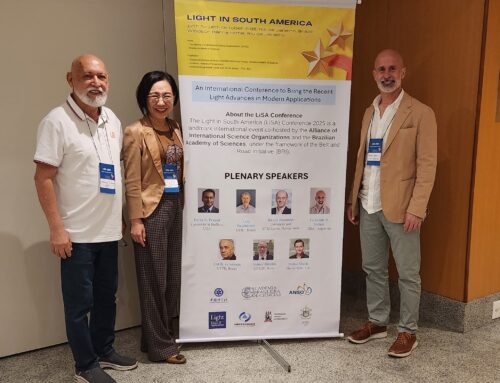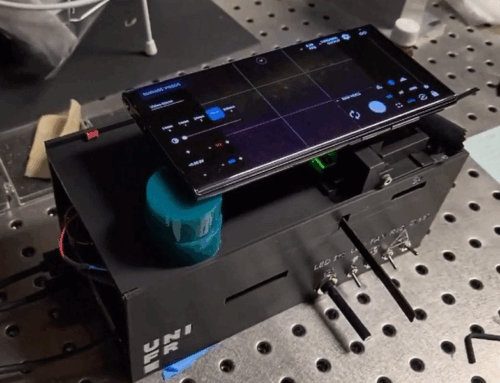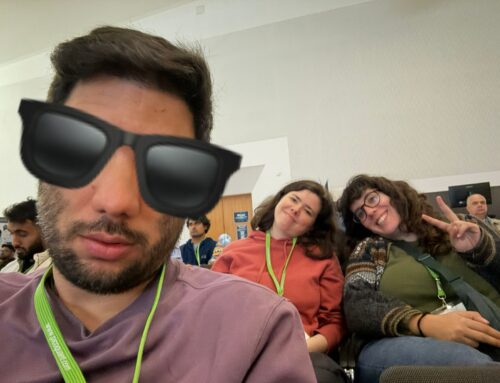Using optical forces it is possible to “print” colloidal metallic nanoparticles on specific locations of a substrate, directly from the suspension. In this way, it is possible to fabricate arrays of nanoparticles of arbitrary geometry. See for example the map of Argentina made of individual gold nanoparticles of 60 nm in diameter.
Of course, it would be great to connect nanoparticles in this way, and thereby fabricate all kinds of circuits and devices based on colloidal nanoparticles. Unfortunately, connecting nanoparticles is not trivial, due to secondary thermal effects during the optical printing process.
In our recent publication in Nano Letters, we address this problem and show that, by making careful use of optical forces and tuning the lasers on and off the plasmonic resonance of the metallic nanoparticles, it is possible to connect nanoparticles using optical printing.
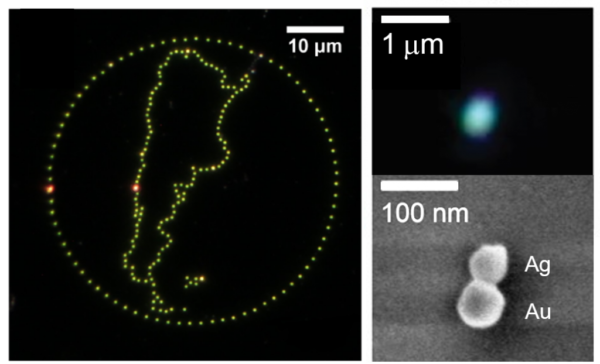
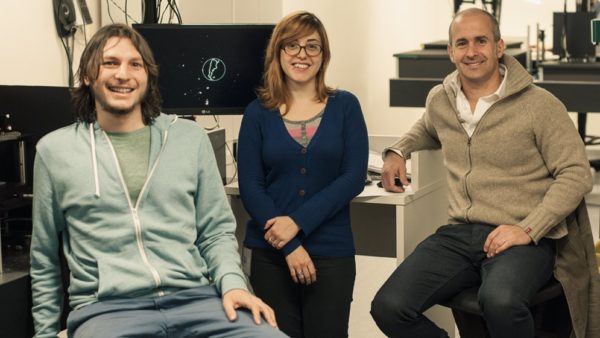
In the picture, some of the authors. From left to right: Julián Gargiulo, Dr. Ianina Violi, Prof. Fernando Stefani
This work constitutes an essential step toward the application of the vast variety of colloidal nanoparticles in circuits and devices.
Nano Letters 16 (2016) 1224-1229
“Connecting metallic nanoparticles by optical printing”
Julian Gargiulo, Santiago Cerrotta, Emiliano Cortés, Ianina Violi, Fernando D. Stefani

